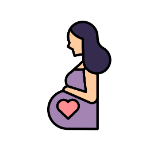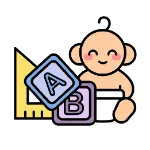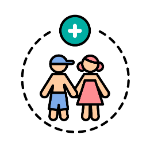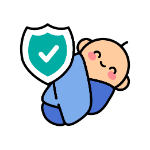
Childcare
CPR For Baby And Children: Why And How You Should Do It
10 min | Updated on 24-03-2023 by HappyPreggie
(Image credits to Lane Regional Medical Centre)
Newborns don't come with instruction manuals; you learn as you go. Many new parents don't know everything they need to know about caring for their little ones, and it's understandable why they are afraid of even the smallest of incidents. While you may not know much about your bundle of joy, you can still learn. One thing you'll need to prioritise the most is learning cardiopulmonary resuscitation (CPR).
This is because certain injuries can cause your little one to stop breathing, and when they cannot breathe, blood cannot circulate, which means the brain will be starved of oxygen. If they're not attended to as quickly as possible, they can suffer permanent brain damage or even die. Any death in this manner is a tragedy, especially if you know you could have done something about it.
What are some of the reasons why a parent would need to know CPR? While you may not want to think about the possibility of needing to breathe for your child, some of the reasons may include the following:
- Accidents
- Near-drowning
- Suffocation
- Poisoning
- Smoke inhalation
- Electrocution injuries
- Possible sudden infant death syndrome (SIDS)
To have the greatest chance of success, CPR should be given as soon as possible when it is needed. If your little one gets involved in an incident, first determine if CPR is required, as it may not be in some cases.
Child and Baby CPR Steps
Step 1: Before starting baby CPR
(Image credits to St John Ambulance)
1. Check For Danger
Check your surroundings for danger or hazards like electrical equipment or incoming traffic. Remove your baby and yourself from danger.2. Check For Response
Check your baby for a response. Talk loudly and squeeze their shoulders. See whether they open their eyes or cry.If your child responds by answering or moving:
- Leave them in the position they were found in if they're not in immediate danger, and check their condition. Get help if needed and reassess the situation regularly.
- If your baby is not responding or is breathing abnormally, call for help or an ambulance and carefully turn the child on their back.
Step 2: Airway and Breathing
1. Airway
Check their mouth for airway blockages like food, vomit or blood. You can use your little finger to clear any blockages but be careful not to put your finger until the back of their throat.
(Image credits to St John Ambulance)
If your child is under 1 year old:
- Ensure your baby's head is in a neutral position with the head and neck in line. At the same time, use your fingertips to lift their chin. Be careful to not push on the soft tissues under the chin as it may block the airway.
If your child is over 1 year old:
- Open your child's airway by tilting their head and lifting the chin. To do this, you can place your hand on their forehead and gently tilt their head back while simultaneously using your fingertips to lift their chin. Do not push on the soft tissues under the chin, as it may block the airway.
- If you think they may have an injury to their neck, tilt their head carefully, a small amount at a time until the airway is open. This is because opening the airways takes priority over a possible neck injury.
2. Breathing
(Image credits to St John Ambulance)
While keeping their airway open, look, listen and feel for normal breathing by putting your face close to their face and looking along their chest.
- Look for chest movements.
- Listen at the child's nose and mouth for breathing sounds.
- Feel for air movement on your cheek.
Step 3: Start baby CPR
1. Chest Compression
(Image credits to St John Ambulance)
To begin, place your baby on a firm, flat surface.
Chest compression in babies less than 1 year
- Put 2 fingers in the centre of their chest in between their nipples. Do 30 compressions at a rate of 2 compressions per second. Each of this compression should push the chest down by about one-third. The quality (depth) of chest compressions is crucial: if a depth of 4cm cannot be achieved with the tips of 2 fingers, use the heel of 1 hand.
Chest compression in children over 1 year
- Place the heel of 1 hand over the lower third of their breastbone.
- Lift the fingers to ensure pressure is not applied over the ribs.
- Position yourself vertically above the chest and, with your arm straight, compress their breastbone so you push it down 5cm, which is approximately one-third of the chest diameter. The quality (depth) of chest compressions is very important.
- In larger children or if you're small, this may be done more easily by using both hands with the fingers interlocked, avoiding pressure on the ribs.
If there's no response, call for help. If you're alone, continue resuscitation for about 1 minute before trying to get help – for example, by calling 999.
2. Rescue Breaths
(Image credits to St John Ambulance)
Rescue breaths for a baby under 1 year
- Ensure their head is in a neutral position and lift the chin.
- Take a breath, then cover your baby's mouth and nose with your mouth, ensuring it's sealed. If you cannot cover both the mouth and nose simultaneously, just seal either with your mouth. If you choose the nose, close the lips to stop air from escaping.
- Blow a breath steadily into the baby's mouth and nose over 1 second. It should be sufficient to make the chest visibly rise.
- Keep their head tilted and chin lifted while you take your mouth away and watch for the chest to fall as air comes out.
- Take another breath and repeat this sequence 4 more times.
Rescue breaths for a child over 1 year
- Tilt the head and lift the chin.
- Close the soft part of their nose using the index finger and thumb of the hand that's on their forehead.
- Open their mouth a little, but keep the chin pointing upwards.
- Take a breath, then place your lips around their mouth, ensuring it's sealed.
- Blow a breath steadily into their mouth over about 1 second, watching for the chest to rise.
- Keeping their head tilted and chin lifted, take your mouth away and watch for the chest to fall as air comes out.
- Take another breath and repeat this sequence 4 more times. Check that your child's chest rises and falls the same way as if breathing normally.
3. Continue giving 30 compressions followed by 2 breaths until medical help arrives.
(Image credits to St John Ambulance)
Look for signs of life. These include any movement, coughing, or normal breathing – not abnormal gasps or infrequent, irregular breaths. If your baby starts breathing and responding, place them in the recovery position and keep a close eye on their breathing. Be ready to start CPR again if they have difficulty breathing.Of course, no parent wants to think about their child choking or ever needing to perform CPR on anyone, much less their own child. However, when done correctly, CPR can save your child's life by restoring their breathing cycle and circulation until emergency personnel arrive.
Don't forget to save the image below - it could be a real lifesaver in an emergency!
(Image credits to St John Ambulance)
Reference:
- https://www.nationwidechildrens.org/family-resources-education/health-wellness-and-safety-resources/helping-hands/cardiopulmonary-resuscitation-cpr-for-infants
- https://raisingchildren.net.au/newborns/safety/cpr/cpr-for-babies
- https://www.nhs.uk/conditions/baby/first-aid-and-safety/first-aid/how-to-resuscitate-a-child/
- https://childdevelopmentinfo.com/ages-stages/baby-infant-development-parenting/cpr-why-every-parent-should-know-how-to-do-it/
- https://babysparks.com/2022/03/25/the-importance-of-knowing-infant-child-cpr-and-how-to-prevent-choking/
Join the largest support network for family health and well-being. Ready to get started?
Get started
















